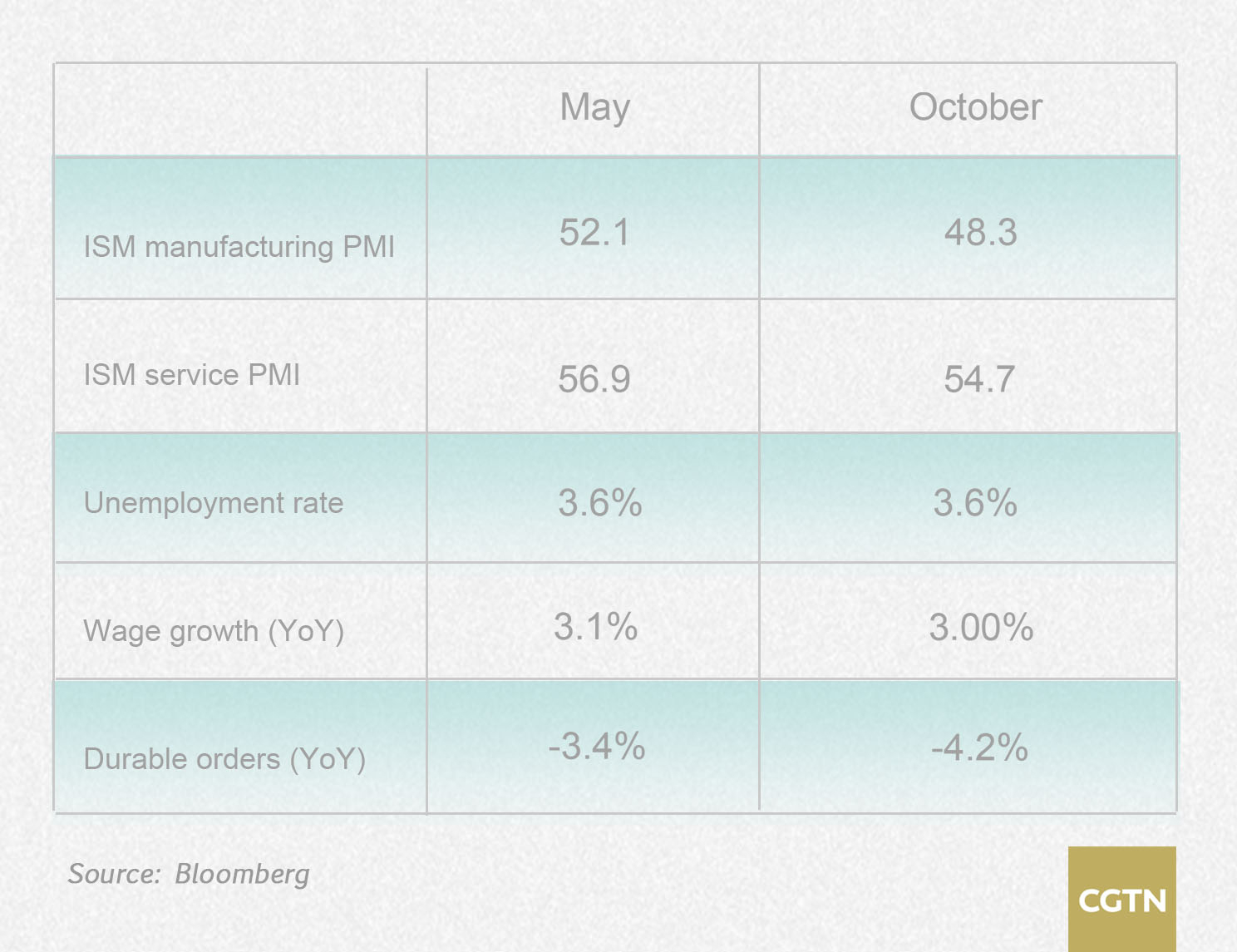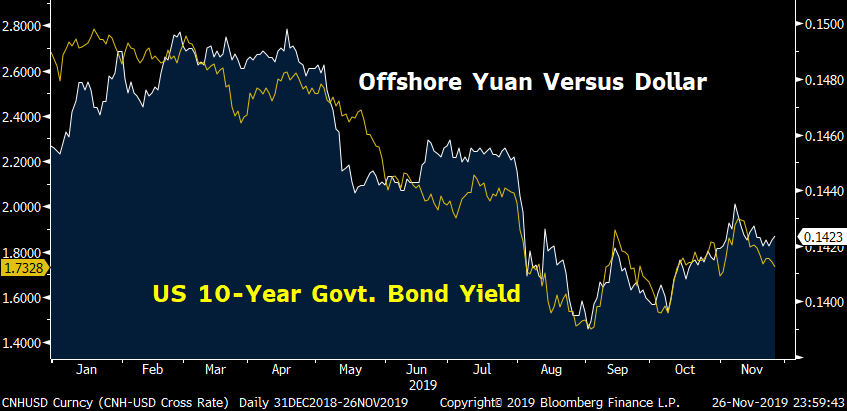Editor's Note: Jimmy Zhu is a chief strategist at Fullerton Research. The article reflects the author's opinion, and not necessarily the views of CGTN.
U.S. equities made modest gains overnight even after U.S. President Donald Trump said negotiations with China on "phase one" trade deal were near completion, as traders may start to assess whether the details of the agreement might justify the recent rally.
Traders are not excessively excited about Trump's trade comments, with S&P 500 gaining 0.22 percent overnight, and its futures staying unchanged in early Asia trading hours. Those prices for safe-haven assets like U.S. 10-year government bond and gold were also stable after the news.
On Tuesday morning, China and the U.S. reached consensus on properly resolving relevant issues and agreed to stay in communication on the remaining points for a "phase one" trade deal during a phone call, according to a statement released by the Ministry of Commerce. A few days earlier, China said it is stepping up its protection of intellectual property rights of foreign investors, fueling market expectations that final progress on "phase one" deal is on track.
There is reason for traders to stay cautious overnight. Even if the two sides do reach a deal in the coming weeks, nearly no market participant today knows what the details will look like, and what the share of "phase one" deal of the entire trade agreement would be. Details such as whether what tariffs will be rolled back, and whether there will be any additional clauses attached, will be crucial to drive the upcoming sentiment in the global capital market. For now, information about this is scarce.
Gains in U.S. stocks driven by speculations betting on 'perfect trade deal'
As of November 26, S&P 500 has rallied three percent this month, heading to the biggest monthly gain since June. However, neither the current economic nor financial conditions favors U.S. stocks.
The Citi Economic Surprise Index dropped around 43 points since the beginning of the fourth quarter to 0.2 as of Tuesday, heading to the biggest quarterly decline since the second quarter last year. Huge declines in the Citi Economic Surprise Index demonstrates that the U.S. economic data in this quarter has been largely disappointing market expectations.
On the other hand, the Fed has given a clear message in its latest meeting that it will pause the rate cuts for some time. A less easy Fed is also seen as negative to the stock market.

Lacking strong fundamentals to pump up stock markets, the recent stocks rally has been mainly driven by trade optimism between China and the U.S. The Trump administration escalated trade tensions early May this year. From then onward, both sides haven't really offered any "physical concession" such as lifting tariffs.
Still, S&P 500 has gained over 6.5 percent since May, even with most of the key barometers below showing that U.S. economic conditions have been deteriorating in this period:

Treasuries, FX market warn that U.S. stocks face retracement risk even if partial trade deal reached
It's wise for U.S. stocks traders to take cue from the nation's 10-year sovereign bond, which is mainly traded by the institutional traders. The 10-year yield dropped about 100 bps in the first 10 months of this year, heading to the biggest yearly decline since 2011. However, there is no sell-off and profit taking activities seen in recent weeks even as the Fed called for "time out" for the rate cuts and improvement of China-U.S. trade outlook.
In the past 10 trading sessions, yield has dropped 15 bps to 1.73 percent, as institutional traders continue buying the safe-haven assets, instead of squaring their early buying positions to lock their profit before the end of the year. The price reaction in the bond market shows that traders in this market remains skeptical on the outcome of the partial trade deal.
Offshore yuan versus dollar seems to agree with the moves in U.S. Treasuries, less with the stocks market. Starting more than a year ago, it has been one of the most reliable proxies to gauge the level of trade tensions. Offshore yuan is now trading around 7.0180 versus the dollar, only gaining 0.5 percent from the end of the last month. Cautious trading sentiment in offshore yuan signals that traders are not willing to bet on the outcome of the China-U.S. "phase one" deal at this moment due to lack of details and visibility.

Trump's trade policy has proven to be unpredictable since his administration started increasing trade tensions last year. If the trade deal does not meet the market's expectation, sell-off risk in the U.S. stocks will emerge again because investors will quickly re-evaluate the possible path for the "phase two" deal, which is likely to be more difficult to reach than "phase one" deal.